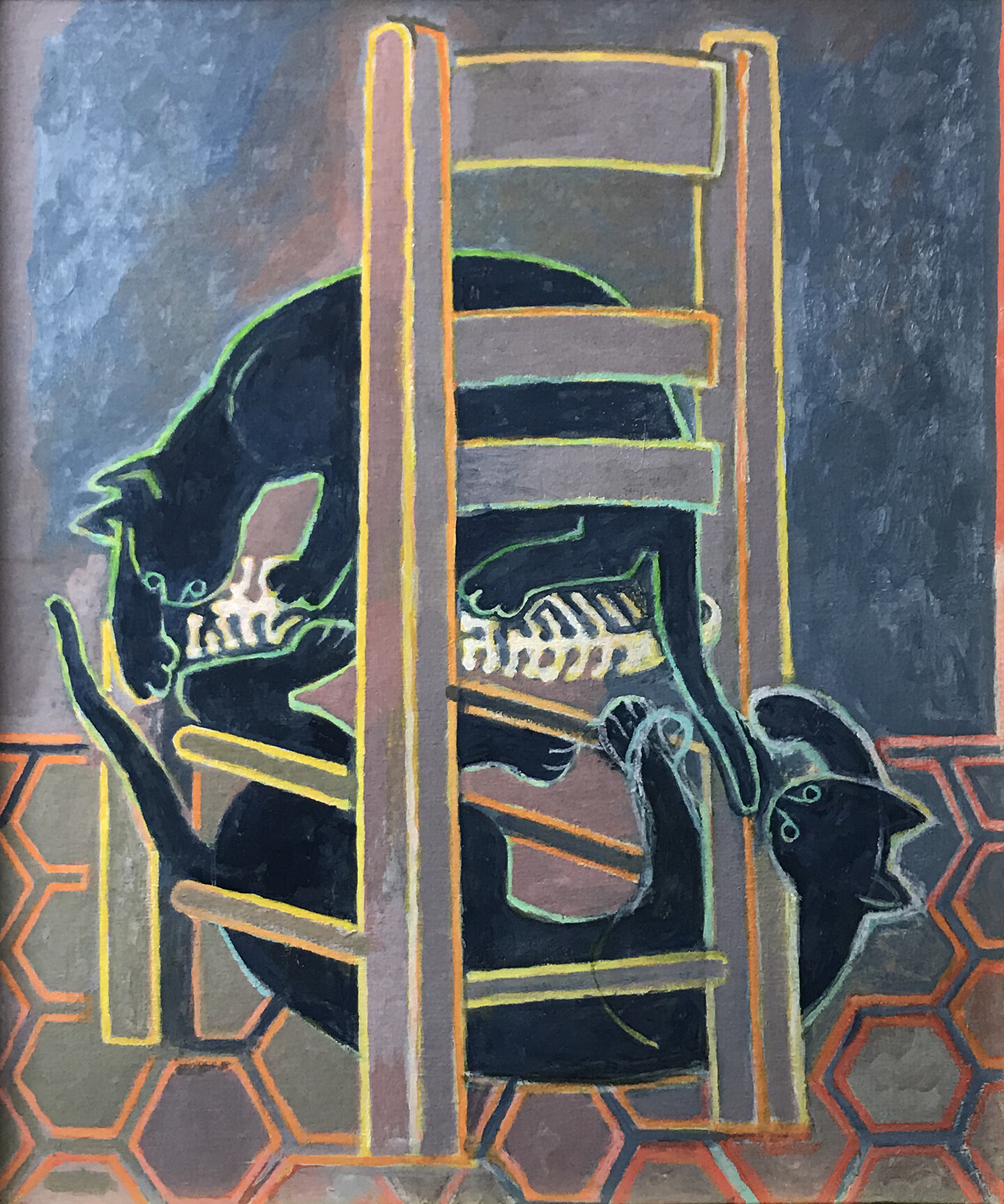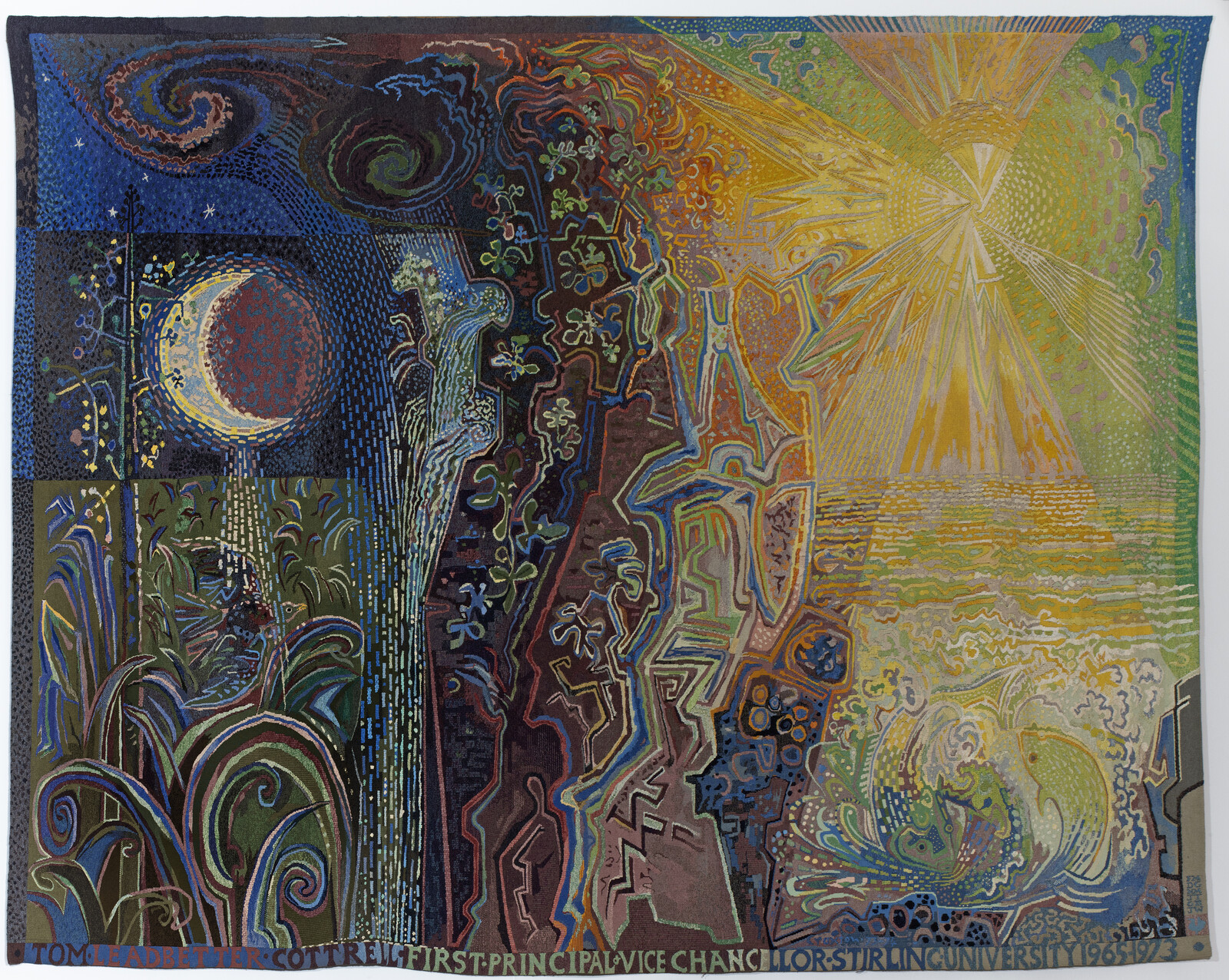Drawn to Light
April 5–July 23, 2023
İstiklal Caddesi No: 211 Beyoğlu
34433 Istanbul
Turkey
Hours: Tuesday–Sunday 11am–7pm
T +90 212 708 5900
F +90 212 292 0790
info@mesher.org
Meşher, Istanbul’s leading multidisciplinary art space, is to celebrate the life and work of the painter and designer John Craxton (1922–2009). The late British artist’s first solo exhibition in Türkiye will run April 5–July 23, 2023.
Meşher will have the honour of exhibiting the biggest and the most comprehensive display of Craxton’s artworks ever to be showcased. John Craxton: Drawn to Light, curated by Ian Collins, friend and the biographer of the artist, brings together a diverse selection of works spanning the artist’s long career.
Featuring nearly 200 works, the exhibition offers a wide-ranging presentation of Craxton’s artworks including a monumental tapestry, paintings, drawings, prints, book designs and personal effects. The exhibition charts a joyful creative life moving from war-time darkness into light and from monochrome to brilliant colour. The window display features an example of the vintage motorbikes the artist loved to ride.
In addition to loaned works, Meşher’s John Craxton: Drawn to Light exhibition features 44 artworks from the Ömer Koç Collection, whose holding of Craxton works is second only to the John Craxton Estate. Photographs by the American photographer Robert McCabe and the London-born painter Nicholas Moore also enrich the John Craxton: Drawn to Light exhibition. First travelling to Aegean in 1954, McCabe’s photography focuses on its landscape and people, providing a close parallel with the art of John Craxton. Nicholas Moore’s photographs show scenes from his 1985 trip to Istanbul with John Craxton. A frequent visitor and an admirer of Istanbul, Craxton’s revelatory exhibition invites art lovers to explore his art and life in the lands he loved best.
Influences
Craxton’s early influences include Picasso and Miró, and at the age of 14 he had studied An Allegory (Fábula) by El Greco, forever his favourite artist. Rooted in travels to Greece and Türkiye, Craxton’s affection for Aegean culture and landscape shaped his adult work. His powerful compositions in linear colour reflect a subtle and highly personal symbolism as well as a sensual life in the sun. Mythology and archaeology, particularly Byzantine mosaics, Turkish carpets and Ottoman architecture were key influences in Craxton’s work.
For nearly 50 years, Craxton created many of his best works in an Ottoman studio on his adopted island of Crete, Chania. He was a prolific portraitist of cats and goats. Although having famous friends, he depicted ordinary people including sailors, shepherd families, and his companions in taverns and cafes.
The Arcadian
John Craxton’s insistence on complete creative freedom took him beyond national or political identity. His art, encompassing the broadest and deepest humanitarianism, speaks to everyone.
Following visits to Istanbul over several decades the mosaics in Hagia Sophia and warm encounters with local people were reflected in the spirit of his pictures. Travelling along the Aegean coast of Türkiye from Troy to Ephesus, his passions ranged from ancient sites to traditional cuisine. “Arcadia” was a word Craxton used habitually to describe this Aegean paradise, and he saw himself as a proud “Arcadian.” He painted pleasure and lived it too.
Exhibition catalogue and book
Published both in English and Turkish, the exhibition catalogue tells the uplifting story of the artist’s life and art. Beginning with a foreword by Ömer Koç, the catalogue contains an essay entitled “A Journey into Joy” by the Drawn to Light exhibition’s curator Ian Collins, which sets out an introduction to Craxton’s vivid life and art.
In addition to the catalogue, the Turkish edition of Ian Collins’ book, John Craxton: Hayatın Lütufları is published by Yapı Kredi Publications (YKY) aiming to present a comprehensive portrait of the artist.
Events
The exhibition, John Craxton: Drawn to Light, will be accompanied by a programme of events organised by the curator Ian Collins and the Meşher team. Various talks and workshops for adults and children will be held free of charge.
The full list of up-to-date event programme can be accessed on the Meşher website and its social media accounts.
Screening and Q&A: John Craxton - A Life of Gifts
Saturday, April 8, 2023,
Meşher will be hosting the screening of Tony Britten’s film, John Craxton - A Life of Gifts. Inspired by the eponymous book by Ian Collins, the film focuses on Craxton as a truly great artist and his life-loving character.
The first viewing of A Life of Gifts will take place on April 8, along with a Q&A session with the participation of Ian Collins and producer Anwen Hurt.
Visiting information
The exhibition can be visited free of charge from Tuesday to Sunday, 11am–7pm. Events and guided exhibition tours are also offered free of charge.
Address: İstiklal Caddesi No: 211 Beyoğlu 34433 İstanbul, Turkey
More information can be found on our website, Instagram, and Facebook.
About Meşher
Initiated by the Vehbi Koç Foundation (VKV), Meşher advocates the creation of new dialogues across time and cultures, not only through its exhibitions ranging from historical research to contemporary art but also its comprehensive array of parallel activities such as publications, workshops and conferences. With its overall interdisciplinary approach, Meşher, which takes its name from the Ottoman Turkish word meaning exhibition space, has been carrying on its activities since September 2019. Meşher presents exhibitions on a wide range of subjects, in a time span ranging from the Middle Ages to the present. With its versatile program, research-based academic aspect and publications, Meşher continues to contribute to the culture and art scene as a reference point. mesher.org / Instagram
About John Craxton
Born in 1922, in London, John Craxton enjoyed a nomadic childhood. He attended various private schools briefly but left without qualifications – even in art. He went his own way and learned by looking. In short stints at art schools in Paris and London he used the equipment while largely ignoring the tuition. Rejected for military service in 1941, with undiagnosed tuberculosis, he befriended Lucian Freud and found a champion in Peter Watson, founder of the influential Horizon arts magazine where his first picture was reproduced when he was aged 19. He toured the wilds of Pembrokeshire in Wales with Graham Sutherland from 1943, as the closest scenery in Britain to the Aegean. His first solo exhibition was in London in 1942 at the Swiss Cottage Café, and his first major show at the Leicester Galleries in 1944. His youthful work was seen as part of the neo-romantic movement. His early pictures show the influence of William Blake and Samuel Palmer and then of Miró and Picasso. After the war he travelled to the Isles of Scilly, Switzerland, Istanbul, Spain, Italy, but mainly Greece, and especially Crete where he settled from 1960. In 1951 Craxton designed sets and costumes for the Sadler’s Wells Ballet (now The Royal Ballet) production of Daphnis and Chloë, starring Margot Fonteyn, at the Royal Opera House in London. He used his first-hand experience of Greece to inform the ballet decor. He had numerous shows of his paintings in England, with a major retrospective at London’s Whitechapel Art Gallery in 1967. His later work became more formal, structured and decorative, while still expressing Romantic pastoral themes. He designed the 1966 Royal Opera House production of Igor Stravinsky’s Apollo. He was a prolific book illustrator, enjoying a long collaboration with his writer friend Patrick Leigh Fermor. He produced revolutionary lithographs for the Geoffrey Grigson anthology Visionary Poems and Passages or The Poet’s Eye (1944). He was elected a Royal Academician in 1993. In 2004 he repainted all his Daphnis and Chloë sets by hand for the ballet’s revival in London and Birmingham. Craxton lived and worked in both Chania, Crete and London. He died aged 87, survived by his long-term partner Richard Riley.
About Ian Collins
Ian Collins is an award-winning biographer, art writer and curator. His many books include monographs on Rose Hilton, Joan Leigh Fermor and John McLean. He has worked with the Yale Center for British Art in New Haven, the British Museum, the Sainsbury Centre in Norwich, the Benaki Museum in Athens, the A.G. Leventis Gallery in Cyprus and Meşher in Istanbul.







